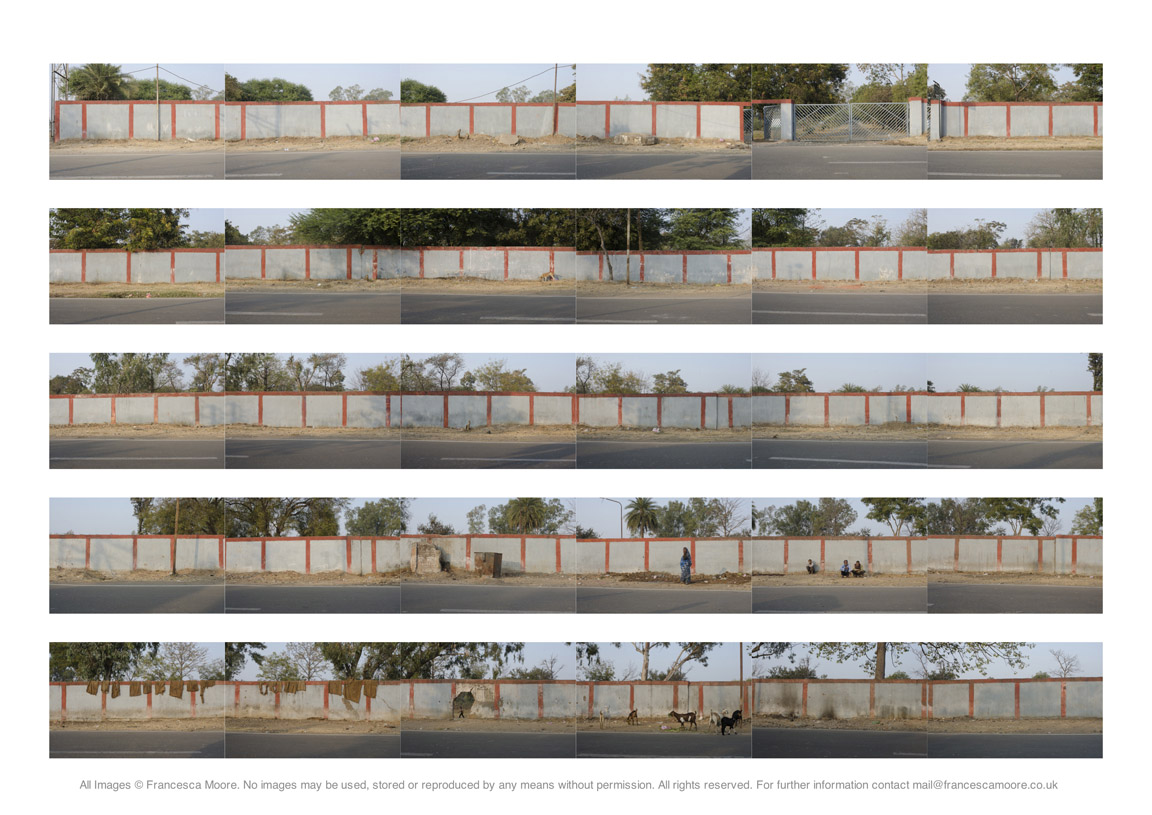 Photographer Francesca Moore visited Bhopal last year as a volunteer at Sambhavna. As part of her new project Bhopal: Facing 30 Francesca will return to Bhopal to shoot a project in two parts, portraying the site of the 1984 Bhopal disaster today and of the people that continue to be affected 30 years on.
Photographer Francesca Moore visited Bhopal last year as a volunteer at Sambhavna. As part of her new project Bhopal: Facing 30 Francesca will return to Bhopal to shoot a project in two parts, portraying the site of the 1984 Bhopal disaster today and of the people that continue to be affected 30 years on.
A book of the work will be published to commemorate the 30th anniversary of the disaster and Francesca will also publish updates on a blog and invite people to follow where it will detail project progress and events. A series of free talks and events will be hosted in London and Brighton, to engage local people with the artwork, and with the wider issues of Bhopal.
We caught up with Francesca to find out more.
Can you tell us a bit about your background as a photographer?
I have an MSc in Biological Photography & Imaging, and a BSc in Zoology, both from The University of Nottingham. I’ve always been interested in the relationships between organisms and their environment. I began studying photography as part of the undergraduate degree, learning to shoot any array of things that can represent science, and fell in love with it instantly.
At the same time, I was becoming more and more interested in social and environmental issues that have a consequential impact on the environment. It took a bit of convincing before my MSc lecturer allowed me to investigate the impact of new EU legislation on traditional Romanian subsistence farmers for my final project, but he did so on the condition that I got some experience with photographers that shoot people. So, I did, and this is how I became freelance.
How did you come to visit Bhopal?
I had planned to visit India on a three-month research trip during 2012-13, to shoot some personal work, and imagery for a few different charities and organisations. A friend of mine from Pune, India, suggested I visit Bhopal. She had been recently and told me the place had never been cleaned up. Some of what she told me was enlightening. I had remembered seeing campaigns in The Guardian when I was growing up, but I didn’t realise until this point that the problems had never been remediated. I contacted the Sambhavna Trust Clinic just ahead of our trip and asked if we could go along and offer to take pictures, if they needed them.
What made you want to return to Bhopal?
I was fascinated with the wall that was erected to contain the Union Carbide factory and the disaster site – a wall that supposedly determines the boundary between what is safe, and what is not. The most astonishing thing about the wall is the level of degradation and easy access to what is deemed ‘un-safe’. There are cavernous holes at ground level, steps and ledges that lead up and over the wall, security gates are left open, parts where the wall is only knee high. The perimeter wall has rows and rows of residents’ houses backing on to it. Children clamber the walls or pass through the holes – it’s an appealing grassy spot for a game of cricket. From the height of a small child you cannot see the remains of the abandoned factory, you can just see that the grass is greener on the inside. From this perspective, there is no danger.
Mesmerised by this situation, I decided to document the entire boundary wall of the Union Carbide site, from the perspective of a young child, say six or seven years old. Each image overlaps slightly, always at the point of the wall. Therefore the wall remains the continuum when the images are presented together.
On this initial trip, I shared ideas with Sathyu Sarangi from the Sambhavna Trust Clinic and with Chandana Mathur, one of the BMA trustees who happened to be in Bhopal at the time, to develop the project. I expressed that I would like to return to shoot the second part of the project the following year, but to do so I would apply for funding. I’m very pleased they entertained the idea.
Can you tell us a bit more about Bhopal: Facing 30?
An important aspect of my project is the juxtaposition of people and place. On the one hand the families that live close to the contaminated site are a symbol of resilience and optimism, whilst on the other the site represents 30 years of pain and suffering. For this reason I want to capture the formal family portraits of those living in the highly populated colonies surrounding the Union Carbide site that on my previous trip were extremely welcoming and full of positivity, despite living below the poverty line and with their health continually at risk. These people, mostly without modern technology, would never have been able to document their children growing up, or have a family portrait taken. In India, a formal family portrait demonstrates wealth, accomplishment, and a sense of achievement; all things usually associated with the higher castes.
I would like to make the portraits formal, in keeping with Indian studio portraiture and I envisage that people will dress in their best kurtas and saris for the occasion. I hope these images will be the empowering symbol of positivity and optimism for the future.
For further info: [email protected] and blog.francescamoore.co.uk (until a dedicated project blog is in place).
Bhopal: Facing 30 is supported by Arts Council England



